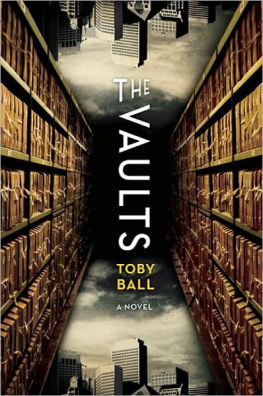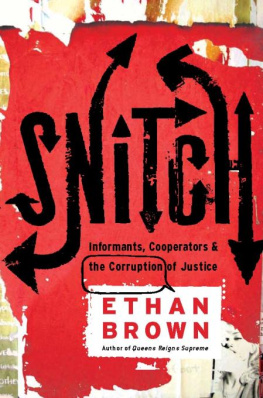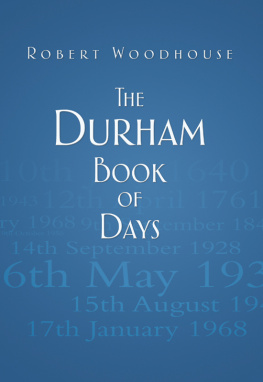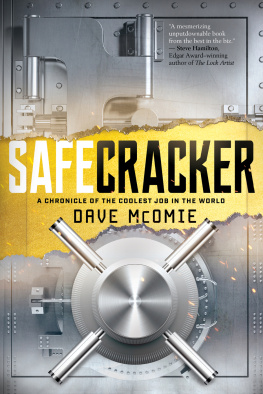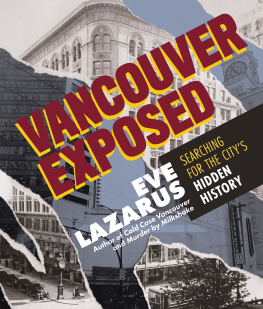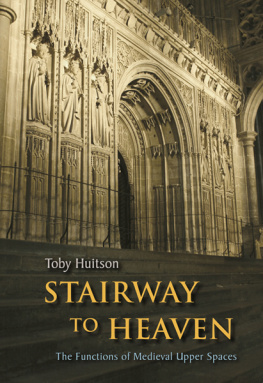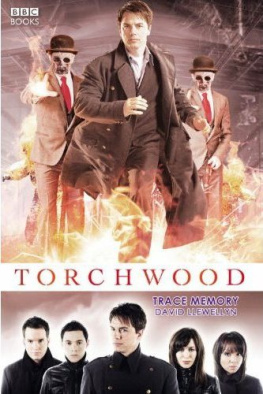THE VAULTS
THE VAULTS
TOBY BALL

ST. MARTINS PRESS
NEW YORK
TABLE OF CONTENTS
This is a work of fiction. All of the characters, organizations, and events portrayed in this novel are either products of the authors imagination or are used fictitiously.
THE VAULTS. Copyright 2010 by Toby Ball. All rights reserved. Printed in the United States of America. For information, address St. Martins Press, 175 Fifth Avenue, New York, N.Y. 10010.
www.stmartins.com
Book design by Jonathan Bennett
Library of Congress Cataloging-in-Publication Data
Ball, Toby.
The Vaults / Toby Ball. 1st ed.
p.cm.
ISBN 978-0-312-58073-5
1. Political corruptionFiction. 2. Municipal archivesFiction. 3. ArchivistsFiction. 4. JournalistsFiction. I. Tiltle.
PS3602.A598V38 2010
813' .6dc22
2010022065
ISBN 978-0-312-58073-5
First Edition: September 2010
10 9 8 7 6 5 4 3 2 1
For Deborah, Jacob, and Sadie
ACKNOWLEDGMENTS
I owe a debt of gratitude to many people for their help and support.
Faith Ball and Susan Moger both read many drafts and their suggestions and critiques helped shape this book from the beginning. Jonathan Ball, Susanna Kahn, and Jacqueline Ball Smith also read early versions and provided feedback and support.
My life as a writer changed dramatically when I began working with my agent, Rob McQuilkin. He has taught me a tremendous amount and he, along with his colleague Rachel Vogel, provided crucial guidance in making this book much stronger and getting it into the right hands. I look forward to a long partnership.
I am lucky to be working with my editor, Michael Homler, and the people at St. Martins Press. Michael guided this process with a steady hand and good humor, and was always available to explain, encourage, and offer insight.
There are more people than I could possibly name here who have helped me with their support, interest, and friendship, but I do want to single out a few people: Susanna, Pete, Jackson and Julia Kahn; Dorothy and Richard Saunders; Doris and Bob Ball; Terrence and Martin Sweeney; Paul Nyhan; Pete and Connie Walden; Chris Hodgson; my manager, Jacob Ball; the women at the Newmarket Public Library; and the people at Clean Air-Cool Planet, the Family Research Laboratory and the Crimes against Children Research Center who do the really important work. Also, thank you to the Newmarket/Durham mob: Vaso, Christopher, A-Train, Doug, Emma, T-Bone, Denise, Val, Tim, Blake, Britta, John, Lisa, Ian, Stephanie, Heidi, Cliff, Ben, Alex, Tim, Elly, Ollie, Tillie, Charlie, Morgan, Ted, Lauren, Dudley, Tom, Phyllis, Ray, Hunter, and Littlefoot.
Thank you to my parents, Faith and Jonathan Ball, for their lifelong love and support.
And finally, thank you to my wife, Deborah Walden, who has been by my side through it all, and to Jacob and Sadie, who give me joy every day. I love you very much.
THE VAULTS
CHAPTER ONE
The Vaults took up nearly half a city block. Files arranged in shelves arranged in rows; files from every case handled in the City for nearly the past century; files arranged, cross-referenced, and indexed. So complicated and arcane was the system that at any given time only one living person understood it. At this time, that person was Arthur Puskis, Archivist. He was the fourth Archivist, inheriting the position from Gilad Abramowitz, who had gone mad in his final years and died soon after taking his leave of the Vaults. Abramowitz had mentored Puskis for the better part of ten years, explaining, as best as his addled mind allowed, the logic behind the system. Even so, it had taken Puskis most of the following decade to truly understand. He was now in his twenty-seventh year in the Vaults.
As happened every day, several times a day, OShea, the messenger from Headquarters, had brought a list of files to be pulled. Several items on the list were preceded by an asterisk, which meant that Puskis was to pull all cross-referenced files as well. Puskis had a file cart that he wheeled down the long aisles, searching for the appropriate shelves. The cart had a loose wheel that squeaked rhythmically with each rotation.
Puskis completed his rounds and returned to his desk with the requested files. He opened the files that had been asterisked and took down the numbers of the cross-referenced files. He then took the file cart and went to retrieve those files. Each aisle was illuminated at thirty-foot intervals by a bare electric lightbulb. Every journey consisted of walking from an illuminated area into a more twilit space and then back into illumination. None of the bulbs ever seemed to burn out, and Puskis was vaguely aware that the City sent someone around to check them periodically. Their collective hum was like some primal sound, one that could have emanated from the earth itself.
He was at the shelf for the C4583R series, in a dimly lit stretch, when he found the two files. He was searching for C4583R series, subseries A132, file 18. It was in the correct location, just after C4583R series, subseries A132, file 17. He put the file in the file cart and, out of habit, checked the next file to make sure that it was C4583R series, subseries A132, file 19. Abramowitz had suggested the method; an episodic way to check on filing accuracy in place of doing periodic audits as Abramowitzs predecessors had done. The files were too voluminous now to make that feasible.
Initially, when he saw the adjacent file, C4583R series, subseries A132, file 18, he assumed he had made a mistake and retrieved the wrong file to begin with. He checked the file cart and found that he had in fact taken the correct file. This meant that there were actually two C4583R series, subseries A132, file 18s. Puskis removed the spectacles from the end of his long, thin nose, rolled his head around to loosen his neck, replaced the spectacles, and looked at the files again. Nothing had changed. The two files bore the same label.
He opened the one that had been left on the shelf. It was the file for a Reif DeGraffenreid, FACT identification number such and such, with this particular address and so on. He opened the one in the file cart. Again, the name was Reif DeGraffenreid, same FACT number, address, etc. Duplicate files? Puskis could not imagine himself capable of such sloppiness. A puzzle. Puskis put the second file in the file cart and returned to his desk to address this vexing problem.
Puskis took the two folders and, with his skeletal fingers, laid them on opposite sides of his barren desk. He removed the contents one by one, first from the file folder on his left and then from the one on his right. Puskis had, from years of experience, acquired an especially keen sense of paper of various ages. He would have told an inquisitive soulif he ever actually interacted with onethat it was an instinct. The truth was that it was an acute understanding of the paper stocks of different decades and the effect that aging had on them, making them dry, crisp, and discoloredbut each stock in a minutely unique way.
He noticed that the papers from the two files were not of identical age. The paper from the file to his right was not eight years oldtoo moist, it bent limply from his fingers, without the rigidity that crept into older paper. Taking a greater interest now, Puskis estimated the paper on the right to be three or four years old. He held the more recent paper up to the light to confirm this estimate. The Departments paper supplier for years had been Ribisi & Porfiro. They had imprinted their paper with a distinctive sea-horse watermark. Five years ago, however, they had been acquired by Capitol Industries, and to cut costs the corporation had done away with the watermark. The more recent sample, then, bearing no watermark, must have been created in the last five years. Puskis checked the paper from the older file, and as he suspected, it carried the watermark. Somebody had typed the more recent pages at least two or three years after the original file had been created. It was curious.
Next page
